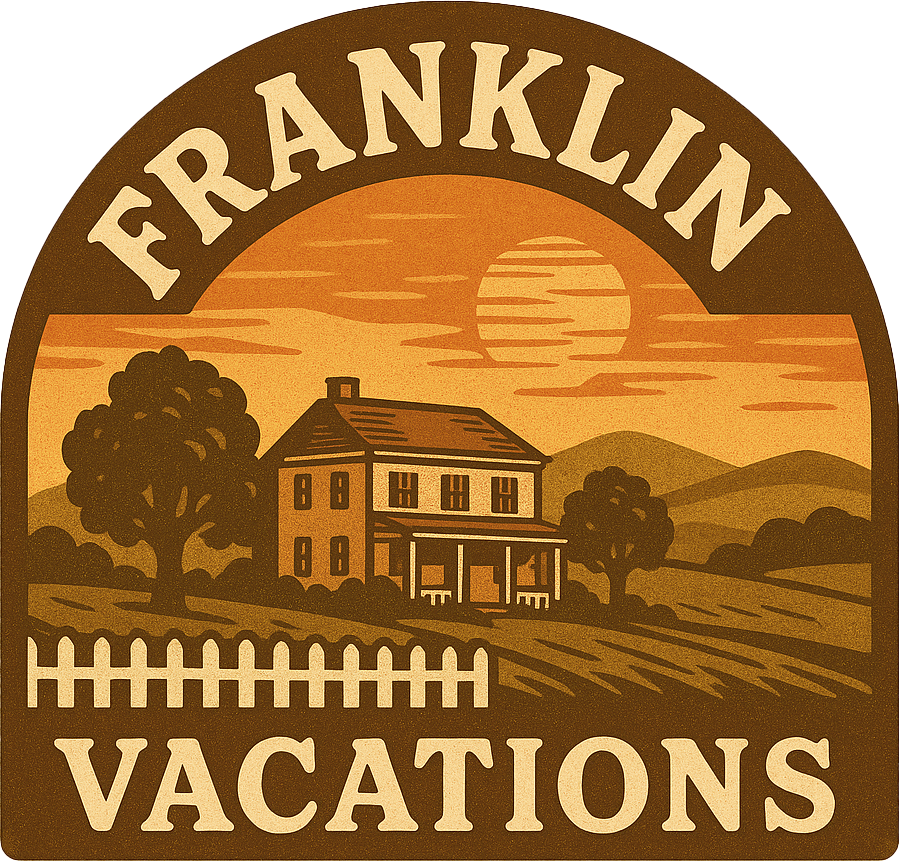Located in the historic district of Franklin, Tennessee, the Carter House is one of the most significant Civil War landmarks in the region. Built in 1830 by Fountain Branch Carter, this unassuming brick farmhouse became the epicenter of the Battle of Franklin—one of the bloodiest engagements of the Civil War—on November 30, 1864.
A Prosperous Farm Before the War
Before the outbreak of war, the Carter family managed a prosperous farm on the outskirts of Franklin. Fountain Branch Carter, a skilled builder and businessman, oversaw a diversified operation including a cotton gin, blacksmith shop, and numerous enslaved laborers. The house itself was modest in size but well-built, symbolizing the industrious spirit of Middle Tennessee farmers during the 19th century.
The family included Fountain Branch, his wife Polly, and their twelve children. Like many Southern households of the time, the Carters’ lives were closely tied to the institution of slavery. The Carter farm was worked by more than two dozen enslaved African Americans, whose stories are increasingly being uncovered by historians and the Battle of Franklin Trust.
November 30, 1864: The Battle Hits Home
The Battle of Franklin came to the Carter family’s doorstep in a sudden and terrifying way. As Union forces under General John Schofield fortified a defensive line just south of downtown Franklin, they commandeered the Carter House and surrounding property as headquarters and field fortifications. On the evening of November 29, the Carter family, along with several neighbors and enslaved individuals, took shelter in the basement.
The next day, Confederate General John Bell Hood launched a massive frontal assault against the Union lines. For five brutal hours, over 20,000 soldiers clashed in close-quarters combat—much of it happening just feet from the Carter home. The Carter House became the epicenter of the battle, and the surrounding area was drenched in violence and destruction.
One of the Carter sons, Tod Carter, who had joined the Confederate Army, was mortally wounded just yards from his home. He was discovered by fellow soldiers and brought into the house, where he died two days later. His tragic death has become one of the most personal and heartbreaking stories of the Civil War in Tennessee.
Battle Scars That Remain
Today, the Carter House remains physically scarred by the battle. Its outbuildings and walls are riddled with hundreds of bullet holes, many of which have been preserved as stark reminders of the home’s violent past. Visitors can tour the grounds and see the battle damage firsthand, gaining a deeper appreciation for the intensity of the fighting and the experiences of those who lived through it.
Interpretive displays and knowledgeable tour guides at the site help visitors understand the tactics of the battle, the emotional toll on the Carter family, and the broader significance of the engagement within the final months of the Civil War.
The Enslaved Experience at the Carter House
Like many antebellum properties, the Carter House was home to enslaved African Americans who worked the land, cared for the home, and sustained the family’s wealth. Recent scholarship and public history efforts by the Battle of Franklin Trust aim to bring these hidden narratives to light. The reconstructed slave quarters on site offer insight into their lives and daily hardships.
Visitors are encouraged to reflect on the full story of the Carter House, which includes the history of forced labor and racial injustice alongside battlefield heroism and family tragedy.
Preservation and Education
The Carter House is managed by the Battle of Franklin Trust, a non-profit organization dedicated to preserving and interpreting Franklin’s Civil War history. Thanks to ongoing preservation efforts, the house and its surrounding acreage have been restored to reflect their wartime appearance.
Educational programs, battlefield tours, and special events help visitors of all ages engage with history in meaningful ways. The Carter House is often paired with tours of Carnton and Rippa Villa, offering a complete picture of Tennessee’s Civil War experience.
Plan Your Visit to the Carter House
The Carter House is open year-round and offers guided tours throughout the day. Admission tickets can be purchased online via the official website, where you’ll also find visitor information, historical resources, and upcoming event details.
Whether you’re a Civil War enthusiast, a student of Southern history, or simply exploring Franklin, a visit to the Carter House offers a deeply moving and educational experience. Walking the same ground as the Carter family and thousands of soldiers, you’ll gain a powerful understanding of the human cost of war—and the resilience of those who endured it.
Franklin Apparel: Show Your Local Pride
If you’re looking to show off your love for Franklin, Tennessee, check out these local-inspired apparel items:
- Franklin Tennessee Shirt – A stylish shirt to wear while exploring the town or enjoying local events.
- Franklin Tennessee Sweatshirt – Stay cozy and warm while showing off your Franklin pride on cooler days.
For more details, visit Franklin Vacations to plan your trip, discover more local gems, and explore the rich history of Franklin, Tennessee.
